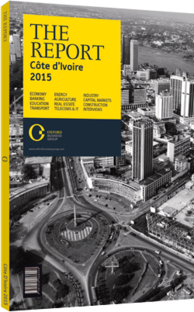Roger Eugène Johnson Boa, President, Association of Insurance Companies of Côte d’Ivoire: Interview

Interview: Roger Eugène Johnson Boa
What measures could help to bolster revenues in the life insurance segment?
ROGER EUGENE JOHNSON BOA: In developed countries, life insurance is leading in terms of revenue. In Côte d’Ivoire, this is not yet the case, but life insurers are encouraged to develop new products to reach a broader share of the population. Over the past three years, with the exception of 2013, the life segment has grown faster than the non-life segment. In 2014 life represents 44% of the overall market, which is a lot considering the size of the InterAfrican Conference of Insurance Markets (Conférence InterAfricaine des Marchés des Assurances, CIMA). By 2016/17 the segment is expected to at least tie up with non-life. This growth can be explained by an increasing number of distribution channels, such as bancassurance. Banks are keen to start offering a wide range of insurance products, and are forming partnerships with insurers. The industry expects growing sales of life and savings products due to a rising middle class. Microinsurance is also set to take off under a more favourable legal framework. Microinsurance premiums are very low, and management costs should also be low in order to generate profits.
How can life insurance assets be channelled towards more long-term investment?
JOHNSON BOA: From a legal perspective, all insurance companies have to invest in bonds, Treasury bonds and other securities. Yet, while non-life insurers only have short-term resources, life insurers collect long-term savings and thus are more able to invest in government debt securities. As per the CIMA code, those firms must make a return on their assets of 3.5%. It is forbidden to invest outside of the CIMA zone; however, insurers have numerous regional opportunities, such as real estate projects and local capital markets. Life insurers could perform better if the government implemented a tax exemption on supplemental life insurance products. However, the current level of buybacks makes it difficult for life companies to make long-term investments.
How can the insurance market in Côte d’Ivoire increase its risk retention?
JOHNSON BOA: According to Article 308 of the CIMA code, 25% of all risks must be insured locally. The aim of this law is to keep premiums in the local market so that cash can be injected into the economy. However, this rule it is not 100% respected. Many large-scale infrastructure projects are financed by foreign loans and executed by international companies, which are insured in their home countries. Some posit that large-scale projects are too expensive to insure for local players, but that is why reinsurance companies exist and local companies can also use co-insurance mechanisms.
What are the needs in terms of increased regulation for the reinsurance sector?
JOHNSON BOA: The reinsurance sector needs to be better regulated within the CIMA zone. Regulators are fully aware of that, and there is currently an existing draft regulation. Regulation is particularly needed for small-sized reinsurers. However, the reinsurance sector is so globalised that stringent regulation could hamper the development of the sector. According to the first draft regulation, foreign reinsurers would have to establish in-country with local assets, but the exact details are still to be discussed and confirmed.
What are the expected outcomes of the “no premium, no coverage” policy?
JOHNSON BOA: Article 13 of the CIMA code aims to reduce premiums in arrears. The default rate of premiums in the CIMA zone is the highest compared to other zones in Africa. In some countries the default rate is as high as 45% of turnover. Under Article 13, insurance companies were given three years to cancel or collect all premiums in arrears. After December 2014, all the premiums that have not been cancelled or collected must be taken off insurers’ books. That is going to affect many insurers’ turnovers and will most likely lead to bankruptcies or acquisitions by larger groups.
You have reached the limit of premium articles you can view for free.
Choose from the options below to purchase print or digital editions of our Reports. You can also purchase a website subscription giving you unlimited access to all of our Reports online for 12 months.
If you have already purchased this Report or have a website subscription, please login to continue.

